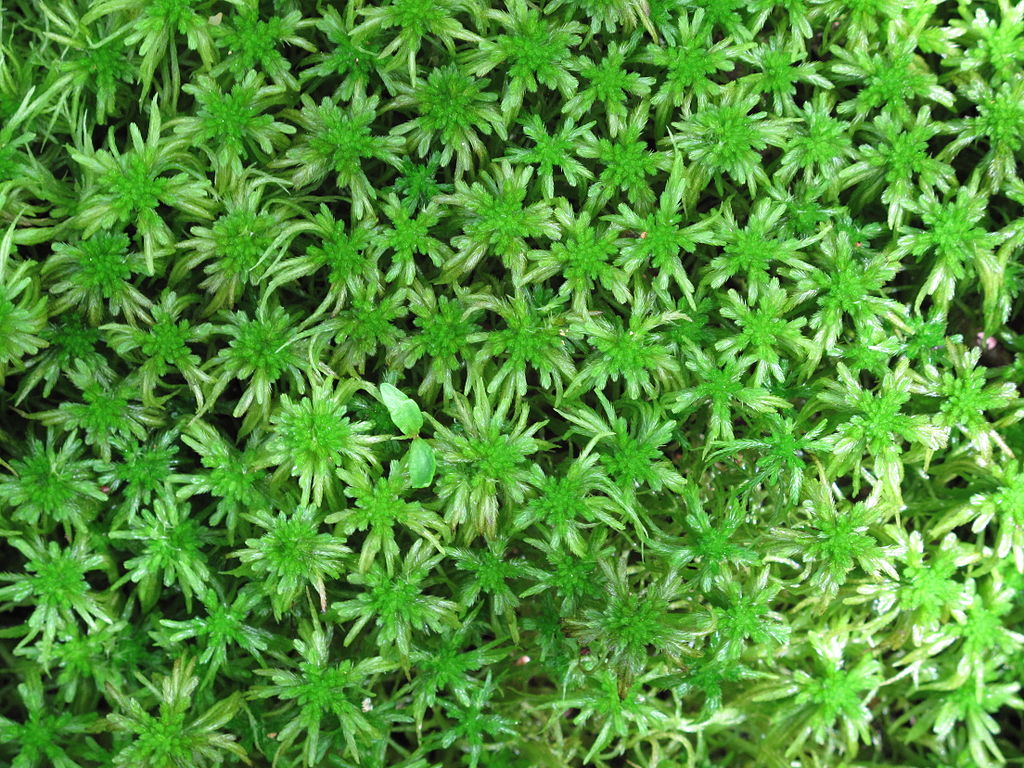Sphagnum
(Sphagnum nitidum)

Description
Sphagnum�is a�genus�of approximately 380 accepted�species�of�mosses, commonly known as "peat moss". Accumulations of�Sphagnumcan store water, since both living and dead plants can hold large quantities of water inside their cells; plants may hold 16�26 times as much water as their dry weight, depending on the species.�The empty cells help retain water in drier conditions. Hence, as sphagnum moss grows, it can slowly spread into drier conditions, forming larger�mires, both raised�bogs�and�blanket bogs.�These�peat�accumulations then provide habitat for a wide array of peatland plants, including sedges and�ericaceous�shrubs, as well as orchids and carnivorous plants. Sphagnum�and the�peat�formed from it do not decay readily because of the�phenolic compounds�embedded in the moss's�cell walls. In addition, bogs, like all wetlands, develop anaerobic soil conditions, which produces slower�anaerobic decay�rather than aerobic microbial action. Peat moss can also acidify its surroundings by taking up�cations, such as�calcium�and�magnesium, and releasing�hydrogen�ions. Under the right conditions, peat can accumulate to a depth of many meters. Different species of�Sphagnum�have different tolerance limits for flooding and pH, so any one peatland may have a number of different�Sphagnum�species.
Taxonomic tree:







